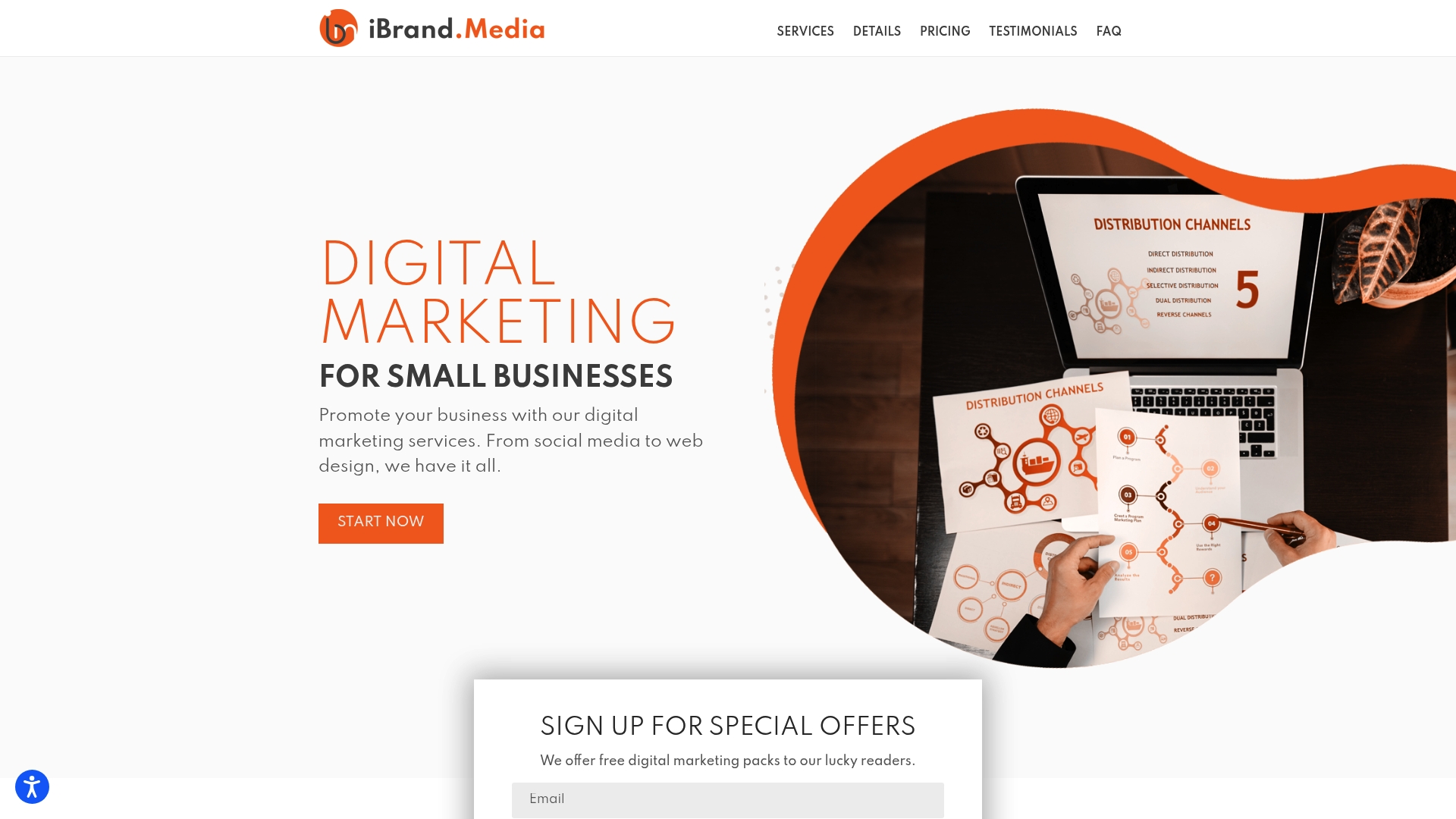Getting your small business to stand out online can feel overwhelming when search engines process billions of queries daily. Most people think you need a huge budget or advanced tech to even stand a chance. The truth is, by following a step-by-step SEO roadmap, even small companies can carve out a powerful online presence and reach more local customers than ever before.
Table of Contents
- Step 1: Assess Your Current Online Presence
- Step 2: Optimize Your Website Structure
- Step 3: Conduct Keyword Research
- Step 4: Create High-Quality Content
- Step 5: Build Local Citations And Backlinks
- Step 6: Measure And Adjust Your SEO Strategy
Quick Summary
| Key Point | Explanation |
|---|---|
| 1. Assess Your Online Presence | Conduct a digital audit to understand your current online visibility and identify improvement opportunities. |
| 2. Optimize Website Structure | Design a user-friendly website layout that enhances navigation and aids search engine indexing. |
| 3. Conduct Effective Keyword Research | Identify relevant keywords that potential customers use, balancing broad and specific terms for optimization. |
| 4. Create High-Quality Content | Develop original content that addresses customer needs and integrates keywords for better SEO performance. |
| 5. Build Citations and Backlinks | Establish local citations and seek quality backlinks to enhance credibility and visibility in your industry. |
Step 1: Assess Your Current Online Presence
Assessing your current online presence is the critical first step in developing an effective small business SEO checklist. This foundational stage helps you understand exactly where your digital footprint stands and identifies opportunities for strategic improvement. Before you can optimize your online visibility, you must know your starting point.
Begin by conducting a comprehensive digital audit that evaluates your existing online assets. Start with your website performance by using free tools like Google PageSpeed Insights to analyze loading speed, mobile responsiveness, and overall technical health. Check how your website appears across different devices and browsers, noting any design or functionality issues that might impact user experience or search engine rankings.
Next, perform a thorough search engine evaluation. Google your business name and examine the results critically. What appears in the first few pages? Are your social media profiles, business listings, and website prominently displayed? Learn more about building a strategic online presence. Investigate any outdated or incorrect information that could be confusing potential customers. Take screenshots and create a detailed inventory of your current online representations.
Key verification points for this assessment include:
Below is a verification checklist table to help ensure you cover all the essentials during your assessment of your current online presence.
| Verification Point | Why It Matters |
|---|---|
| Accurate business name and contact information | Builds trust and prevents confusion among potential customers |
| Consistent NAP (Name, Address, Phone Number) details | Essential for local SEO and directory accuracy |
| Professional, up-to-date profile images and descriptions | Enhances credibility and supports branding |
| Functional website with clear navigation and contacts | Delivers a positive user experience and aids SEO |
| Correct, current business info across all platforms | Prevents misinformation and supports search rankings |
- Accurate business name and contact information across all platforms
- Consistent NAP (Name, Address, Phone Number) details
- Professional and up-to-date profile images and business descriptions
- Functional website with clear navigation and contact information
The goal of this initial step is not just to document your current status but to establish a baseline from which you can measure future SEO improvements. By thoroughly understanding your existing digital landscape, you set the stage for targeted, effective optimization strategies that will enhance your small business’s online visibility and attract more potential customers.

Step 2: Optimize Your Website Structure
Website structure is the backbone of your small business SEO strategy, determining how easily search engines and users can navigate and understand your digital presence. Effective website architecture transforms a complex digital ecosystem into a clear, intuitive pathway for potential customers. This step focuses on creating a logical, search engine friendly framework that guides visitors seamlessly through your online content.
Start by mapping out your website’s navigation with user experience as the primary consideration. Design a hierarchical structure that allows visitors to reach any page within three clicks from the homepage. This means organizing your content into clear, logical categories that reflect how potential customers might search for your services. Use descriptive, keyword rich menu labels that communicate exactly what visitors will find when they click. Implement a clean, straightforward menu structure that feels intuitive and eliminates visitor confusion. Discover advanced techniques for website optimization to further refine your digital strategy.
Create a comprehensive internal linking strategy that connects related content naturally. Internal links help search engines understand the relationships between different pages on your site and distribute page authority effectively. When writing content, look for organic opportunities to link to other relevant pages within your website. This not only helps with SEO but also encourages visitors to explore more of your online resources.
Key verification points for website structure optimization include:
- Menus are clear and logically organized
- All pages are accessible within three clicks from homepage
- Internal links are relevant and provide additional context
- Navigation is consistent across all website pages
By methodically constructing a well organized website structure, you create a solid foundation for improved search engine visibility and enhanced user experience. Each improvement brings you closer to a more discoverable and engaging online presence for your small business.
Here is a table summarizing key verification points for a strong website structure, helping you quickly review whether your site architecture meets essential SEO criteria.
| Verification Point | Description |
|---|---|
| Clear, logically organized menus | Ensures easy navigation for users and search engines |
| All pages reachable in three clicks from homepage | Increases accessibility and improves user experience |
| Relevant internal links between related pages | Helps distribute page authority and aids content discovery |
| Consistent navigation across all website pages | Builds familiarity and prevents confusion for returning visitors |
Step 3: Conduct Keyword Research
Keyword research transforms your small business SEO strategy from guesswork into a precise, targeted approach. This crucial step helps you understand exactly how potential customers search for services like yours, bridging the gap between your offerings and their online queries. Think of keyword research as creating a digital map that guides customers directly to your business.
Begin by brainstorming the specific terms and phrases your ideal customers might use when searching for your products or services. Put yourself in their shoes and consider the language they would naturally employ. Use free tools like Google Keyword Planner and Understanding SEO fundamentals to expand and validate your initial keyword list. Focus on a mix of broad, short tail keywords and more specific, long tail keywords that reflect precise customer needs. Local businesses should prioritize location specific keywords that capture geographical search intent.
Dive deeper by analyzing keyword difficulty, search volume, and relevance to your specific business offerings. Not all keywords are created equal. Some might have high search volume but intense competition, while others might be more niche but easier to rank for. Look for keywords with a sweet spot of moderate search volume and lower competition. Pay special attention to informational keywords that demonstrate user intent, such as questions or problem solving phrases related to your industry.
Key verification points for keyword research include:
Refer to this keyword research checklist table to ensure you have covered each required step in the process for effective SEO targeting.
| Verification Point | Description |
|---|---|
| Compiled list of 20-30 relevant keywords | Ensures broad yet targeted SEO coverage |
| Balance of broad and specific terms | Reaches both wide and niche audiences |
| Understanding of search intent for each keyword | Aligns content with user needs |
| Identified keywords with realistic ranking potential | Focuses efforts for better results in less competitive areas |
- Compiled list of 20-30 relevant keywords
- Keywords balanced between broad and specific terms
- Clear understanding of search intent behind each keyword
- Identified keywords with realistic ranking potential
Remember that keyword research is an ongoing process. The digital landscape continuously evolves, and so should your keyword strategy. Regularly revisit and refine your keyword list to stay ahead of changing search trends and customer behaviors.
Step 4: Create High-Quality Content
Creating high-quality content is the cornerstone of successful SEO for small businesses. Your content is not just information, it’s your digital handshake with potential customers, communicating your expertise, solving their problems, and establishing trust. This step transforms your keyword research into engaging, valuable material that search engines and readers will love.
Begin by developing content that directly addresses your target audience’s most pressing questions and needs. Each piece should provide comprehensive, actionable insights that go beyond surface level information. Learn more about building a compelling online brand to enhance your content strategy. Focus on creating original, in-depth content that offers unique perspectives or solutions. Aim to become the go-to resource in your industry by producing content that answers questions more thoroughly than your competitors. This means diving deep into topics, providing real world examples, and presenting information in a clear, accessible manner.
Ensure your content is not just informative but also technically optimized for search engines. Incorporate your carefully researched keywords naturally throughout the text, focusing on readability and user experience. Use descriptive headings, include relevant internal and external links, and break up text with images, infographics, or videos that enhance understanding. Pay attention to content length – while there’s no magic number, most successful SEO content ranges between 1000-2500 words, providing comprehensive coverage of a topic.
Key verification points for high-quality content creation include:
- Content thoroughly addresses user intent
- Keywords integrated naturally and meaningfully
- Information is original and provides unique insights
- Text is well structured with clear headings
- Includes relevant multimedia elements
Remember that high-quality content is an ongoing commitment. Consistently producing valuable, updated material signals to search engines that your website is a current, reliable resource in your industry.
Step 5: Build Local Citations and Backlinks
Building local citations and backlinks is a critical strategy that transforms your small business from an online unknown to a credible, discoverable digital presence. These digital references act like professional recommendations, signaling to search engines that your business is legitimate and trustworthy. Think of citations and backlinks as your online reputation builders, helping potential customers find and trust your business.
Start by claiming and optimizing your Google Business Profile, which serves as the cornerstone of local online visibility. Ensure your business name, address, phone number, and website are identical across all platforms. Explore advanced local SEO strategies to maximize your digital footprint. Seek out local business directories specific to your industry and region, submitting accurate, consistent information. Chambers of commerce, local professional associations, and industry specific directories are excellent places to establish authoritative citations that boost your local search rankings.
Backlink building requires a strategic, relationship driven approach. Reach out to local businesses, industry blogs, and community websites to create genuine connection opportunities. Write guest posts, offer expert commentary, or participate in local business roundtables that naturally generate high quality backlinks. Focus on acquiring links from reputable, relevant websites within your community or industry, rather than pursuing quantity over quality. Remember that one strong, contextually relevant backlink is worth far more than dozens of random, low quality links. Consider partnering with complementary local businesses for cross promotion, which can generate mutually beneficial linking opportunities.
Key verification points for citation and backlink building include:
- Business listed in 10-15 relevant online directories
- Google Business Profile fully completed and verified
- Consistent NAP (Name, Address, Phone) information across platforms
- Minimum of 5-10 high quality, relevant backlinks acquired
Building local citations and backlinks is an ongoing process that requires patience, persistence, and genuine community engagement. Treat each connection as an opportunity to showcase your business’s unique value and expertise.
The table below summarizes the key verification points for building local citations and backlinks, so you can track your progress and maintain a consistent approach.
| Verification Point | Description |
|---|---|
| Listed in 10-15 relevant online directories | Improves local SEO and visibility |
| Google Business Profile fully completed/verified | Serves as foundation for local search |
| Consistent NAP information across platforms | Supports SEO, trust, and local ranking |
| 5-10 high quality, relevant backlinks acquired | Strengthens authority and discoverability |

Step 6: Measure and Adjust Your SEO Strategy
Measuring and adjusting your SEO strategy is the critical final step that transforms your digital marketing efforts from guesswork into a precise, data-driven approach. This stage is where you learn, adapt, and continually improve your online visibility, turning raw data into actionable insights that drive real business growth. Think of it as your ongoing performance tuneup for digital success.
Start by setting up comprehensive tracking tools like Google Analytics and Google Search Console. Explore advanced SEO techniques to refine your measurement approach. These powerful platforms provide deep insights into how users interact with your website, revealing which content attracts visitors, how long they stay, and what actions they take. Pay close attention to key performance indicators such as organic search traffic, bounce rate, conversion rates, and keyword rankings. Track your website’s performance month over month, looking for trends and patterns that indicate what’s working and what needs improvement. Don’t just collect data – analyze it with a critical eye, understanding the story behind the numbers.
Develop a systematic approach to strategy adjustment. When you identify underperforming content or pages with high bounce rates, don’t just accept the results. Dig deeper to understand why users might be leaving. Are your keywords not matching user intent? Is the content not providing the value visitors expect? Consider A/B testing different content approaches, updating older posts with fresh information, and realigning your keywords to more precisely match what your target audience is searching for. Remember that SEO is not a one-time task but a continuous process of refinement and adaptation.
Key verification points for SEO strategy measurement include:
- Implemented tracking in Google Analytics and Search Console
- Monthly performance report created and reviewed
- Identified top performing and underperforming content
- Minimum of 3 strategic adjustments implemented based on data
Successful SEO is about staying curious, flexible, and committed to continuous improvement. Your digital strategy should be a living document that evolves with your business and the ever-changing online landscape.
Use this table to track your SEO measurement and adjustment activities to ensure a data-driven, results-oriented process.
| Verification Point | Description |
|---|---|
| Tracking implemented in Google Analytics/Search Console | Enables robust data collection and website monitoring |
| Monthly performance report created and reviewed | Identifies trends and informs data-driven decisions |
| Top performing/underperforming content identified | Targets focus for future SEO improvements |
| At least 3 strategic adjustments based on data implemented | Ensures ongoing optimization and relevance |
Ready to Put Your Small Business SEO Checklist Into Action?
You have just learned how critical it is to accurately assess your online presence, refine your website structure, and build your local reputation. But tackling every step of this SEO checklist alone can leave you feeling overwhelmed and uncertain about what truly moves the needle. The biggest hurdle for most small business owners is turning knowledge into results that drive real growth and increased visibility. That is where we step in.
Explore solutions in our expertise hub

Stop guessing and start seeing results. The team at ibrand.media creates customized SEO strategies that transform checklists into action and action into measurable gains. Our affordable, hands-on approach ensures your online presence stands out in a crowded digital world. Connect today for a tailored plan and experience the difference a dedicated partner can make for your small business success. Take the next step and see how we can help your business grow.
Frequently Asked Questions
How do I assess my current online presence for SEO?
To assess your online presence, conduct a digital audit evaluating your website’s performance, search engine visibility, and social media representations. Use tools like Google PageSpeed Insights to analyze loading speed and functionality. Check for accurate business information across all platforms and create an inventory of your online presence.
What is website structure optimization, and why is it important for SEO?
Website structure optimization involves organizing your website in a clear, intuitive hierarchy that improves navigation for users and search engines. This makes it easier for visitors to find information and helps search engines crawl and rank your pages effectively, enhancing your online visibility.
How can I conduct effective keyword research for my small business?
Effective keyword research involves brainstorming terms potential customers may search for, using tools like Google Keyword Planner to generate and validate a keyword list. Focus on a mix of broad and specific keywords that match user intent and include location-specific terms for local SEO strategies.
What are the best practices for creating high-quality content?
To create high-quality content, address your audience’s needs and questions comprehensively. Use original insights, integrate targeted keywords naturally, and structure your text with clear headings and multimedia elements. Aim for content that engages readers and signals to search engines that you provide valuable information.
Recommended
- Top SEO Techniques for Small Business Owners in 2025 | Ibrandmedia
- What Is SEO Optimization? Simple Guide for Small Businesses | Ibrandmedia
- Essential SEO Tips for Service Businesses to Boost Visibility | Ibrandmedia
- Building an Online Presence: Steps for Small Businesses 2025 | Ibrandmedia
- Growing Your Online Presence: A Guide for Small Businesses – Zoo Digital
- Lokale vindbaarheid verbeteren: tips en strategieën

Recent Comments